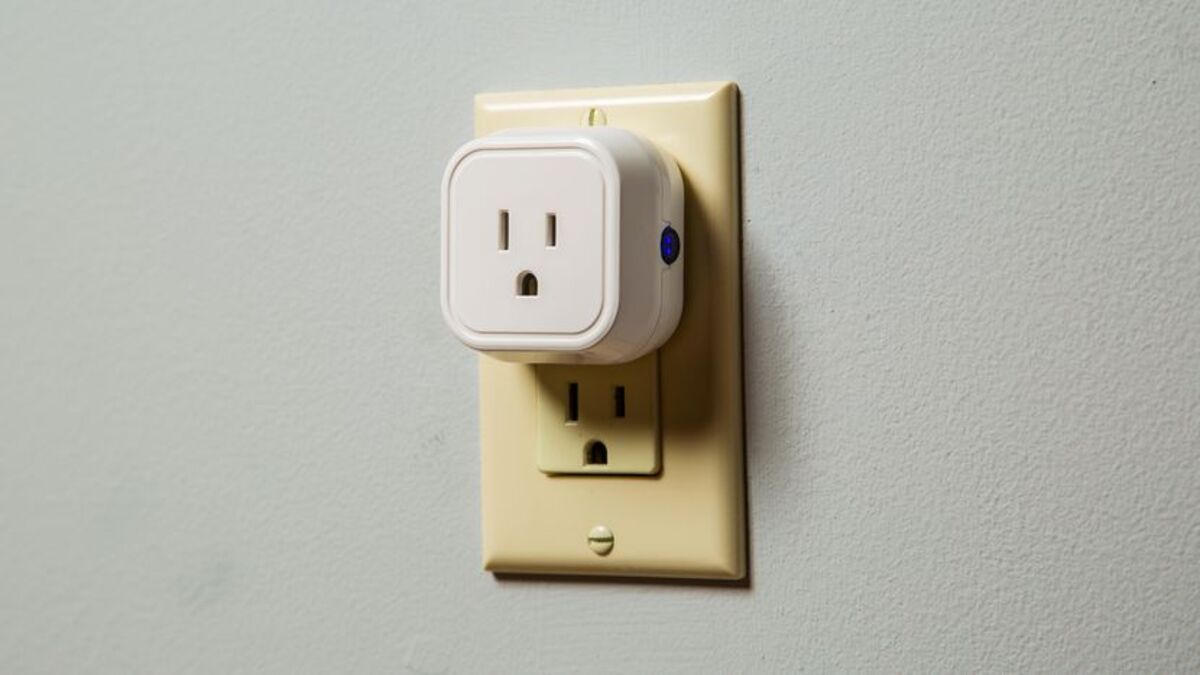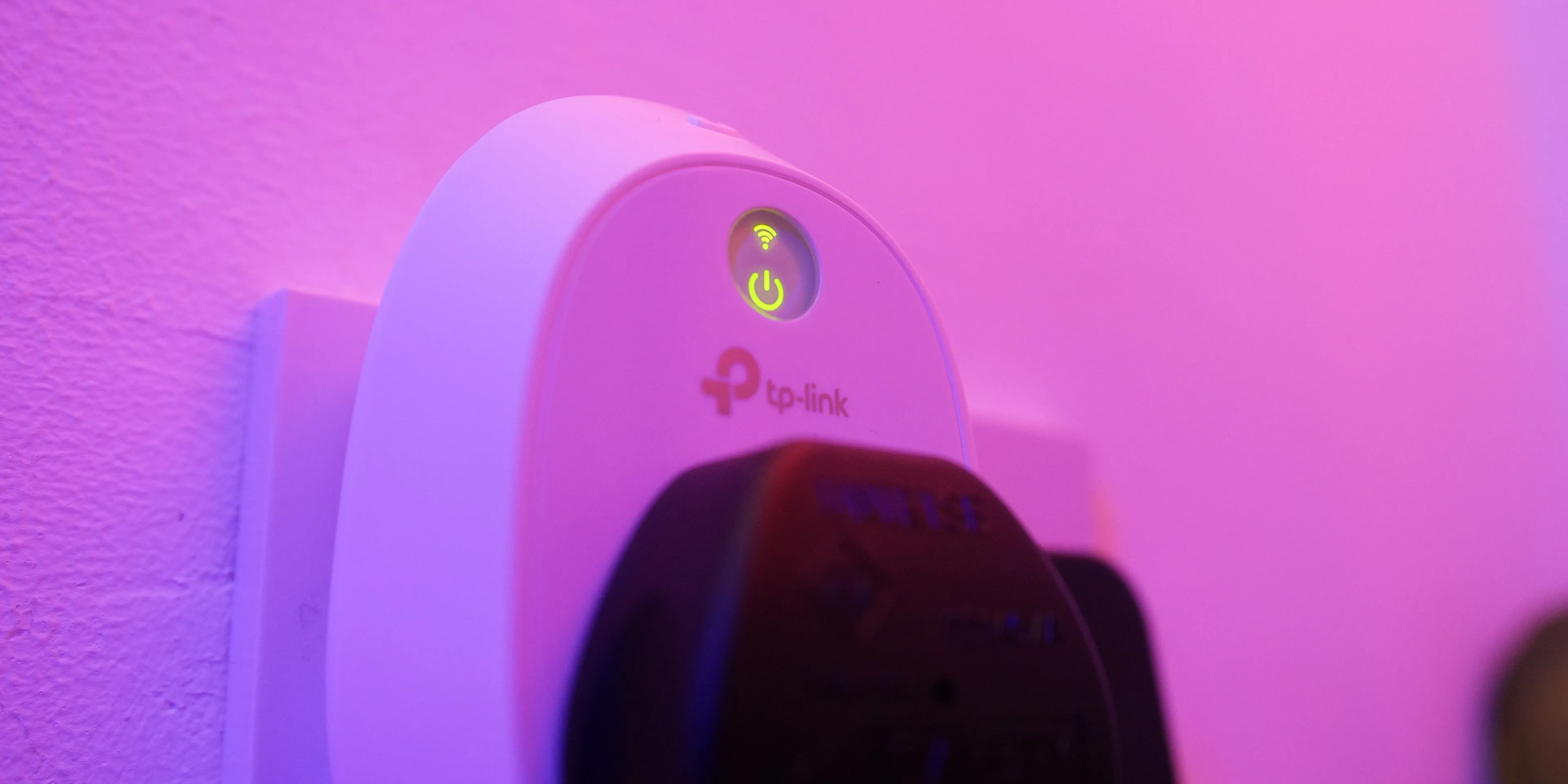Home>Technology>Smart Home Devices>Why Is My Smart Plug Not Connecting?


Smart Home Devices
Why Is My Smart Plug Not Connecting?
Modified: August 28, 2024
Discover common reasons why your smart plug may not be connecting and learn how to troubleshoot the issue. Ensure seamless connectivity for all your smart home devices.
(Many of the links in this article redirect to a specific reviewed product. Your purchase of these products through affiliate links helps to generate commission for Storables.com, at no extra cost. Learn more)
Common Issues with Smart Plug Connectivity
Read more: Why Is My Smart Plug Offline
Common Issues with Smart Plug Connectivity
Smart plugs are convenient devices that allow users to control their electrical appliances remotely. However, connectivity issues can arise, hindering the seamless operation of these devices. Understanding the common issues associated with smart plug connectivity is essential for troubleshooting and resolving these issues effectively.
Here are some of the most prevalent issues that users may encounter:
- Wi-Fi Interference: Smart plugs rely on Wi-Fi connectivity to function. However, interference from other electronic devices or physical obstructions can weaken the Wi-Fi signal, leading to connectivity issues.
- Network Congestion: In densely populated areas or environments with numerous connected devices, network congestion can impede the smart plug’s ability to maintain a stable connection.
- Compatibility Issues: Certain smart plugs may have compatibility issues with specific routers or network configurations, resulting in intermittent connectivity or failure to connect.
- Power Fluctuations: Fluctuations in power supply or voltage irregularities can impact the performance of smart plugs, causing connectivity disruptions.
- Outdated Firmware: In some cases, outdated firmware on the smart plug or the associated app can lead to connectivity issues, as newer features and bug fixes may not be supported.
- Distance from Router: When smart plugs are positioned too far from the Wi-Fi router, the signal strength may diminish, leading to unreliable connectivity.
- Overloaded Network: A network overloaded with data traffic can affect the smart plug’s ability to communicate effectively, resulting in connectivity issues.
Identifying these common issues is the first step towards addressing smart plug connectivity issues. By understanding the potential causes, users can implement targeted solutions to enhance the performance of their smart plug devices.
Troubleshooting Steps for Smart Plug Connection
Key Takeaways:
- Troubleshooting Tips
If your smart plug isn’t connecting, try moving it closer to the Wi-Fi router, updating its firmware, and minimizing network load. These steps can help resolve connectivity issues and keep your devices running smoothly. - Customer Support Benefits
When all else fails, don’t hesitate to contact customer support for personalized troubleshooting and expert guidance. They can help diagnose complex issues, provide firmware updates, and even facilitate warranty claims for your smart plug.
Troubleshooting Steps for Smart Plug Connection
When encountering connectivity issues with smart plugs, it’s essential to perform systematic troubleshooting to identify and resolve the underlying problems. By following these troubleshooting steps, users can effectively address connectivity issues and optimize the performance of their smart plug devices.
Here are the key steps to troubleshoot smart plug connectivity:
- Check Wi-Fi Signal Strength: Verify the strength of the Wi-Fi signal in the vicinity of the smart plug. Consider relocating the smart plug closer to the Wi-Fi router to improve signal reception.
- Restart the Smart Plug: Power cycle the smart plug by unplugging it from the power outlet, waiting for a few seconds, and plugging it back in. This can help reset the device and resolve temporary connectivity issues.
- Update Firmware: Ensure that the smart plug’s firmware and the associated app are up to date. Check for firmware updates and install them to address any known connectivity issues and improve overall performance.
- Reduce Network Load: Minimize the load on the Wi-Fi network by disconnecting unnecessary devices or limiting bandwidth-intensive activities, especially during troubleshooting and setup processes.
- Reset Network Settings: If the smart plug has previously been connected to a different network, perform a factory reset to clear any existing network settings and establish a fresh connection.
- Check Router Settings: Review the router settings and ensure that they are compatible with the smart plug’s requirements. Adjust the router’s configuration if necessary to optimize compatibility and connectivity.
- Utilize a Wi-Fi Extender: If the smart plug is located far from the router, consider using a Wi-Fi extender to amplify the Wi-Fi signal and improve connectivity in the desired area.
- Test with Alternative Devices: Test the smart plug with alternative devices to rule out potential issues with the connected appliances. This can help isolate connectivity problems specific to the smart plug itself.
By systematically implementing these troubleshooting steps, users can effectively address smart plug connectivity issues and establish a reliable connection for seamless remote control of their electrical appliances.
Tips for Improving Smart Plug Connectivity
Read more: How To Connect My Smart Plug To Alexa
Tips for Improving Smart Plug Connectivity
Enhancing the connectivity of smart plugs is crucial for ensuring seamless remote control and automation of electrical devices. By implementing the following tips, users can optimize the connectivity of their smart plug devices and mitigate potential issues that may hinder their performance.
Here are valuable tips for improving smart plug connectivity:
- Positioning and Placement: Place the smart plug in close proximity to the Wi-Fi router to ensure strong and stable connectivity. Avoid placing the smart plug in areas with significant physical obstructions or interference from other electronic devices.
- Wi-Fi Signal Analysis: Use a Wi-Fi signal analysis tool or smartphone app to assess the signal strength in different locations. Position the smart plug in an area with optimal Wi-Fi coverage to enhance connectivity.
- Router Optimization: Optimize the router’s settings by selecting the appropriate Wi-Fi channel and adjusting the frequency band to minimize interference and improve connectivity for smart plug devices.
- Network Segmentation: Consider creating a separate network segment or guest network specifically for smart home devices, including smart plugs. This can reduce network congestion and enhance the stability of connected devices.
- Use Mesh Wi-Fi Systems: Deploying a mesh Wi-Fi system can provide comprehensive coverage and seamless roaming capabilities, ensuring consistent connectivity for smart plug devices throughout the home.
- Power Conditioning: Utilize power conditioning or surge protection devices to stabilize the electrical supply, reducing the risk of power fluctuations that may impact the performance of smart plugs.
- Regular Maintenance: Periodically check for firmware updates for both the smart plug and the associated app. Keeping the devices up to date can address potential connectivity issues and introduce new features for improved performance.
- Professional Installation: If available, consider professional installation services for optimizing the placement and configuration of smart plug devices to ensure optimal connectivity and performance.
By incorporating these tips into their smart home setup, users can proactively enhance the connectivity of smart plug devices, enabling seamless remote management of electrical appliances and maximizing the benefits of home automation.
Contacting Customer Support for Smart Plug Issues
Contacting Customer Support for Smart Plug Issues
When troubleshooting smart plug connectivity issues becomes challenging or when encountering persistent technical difficulties, reaching out to customer support can provide valuable assistance in resolving these issues effectively. Customer support teams are equipped to offer expert guidance and solutions to address a wide range of smart plug-related concerns.
Here’s how users can benefit from contacting customer support for smart plug issues:
- Technical Expertise: Customer support representatives possess in-depth technical knowledge of smart plug devices and can provide tailored troubleshooting guidance to address connectivity issues and other technical challenges.
- Product-Specific Assistance: Customer support teams are familiar with the intricacies of the smart plug model and its associated app, enabling them to offer specific solutions and recommendations based on the device’s features and functionalities.
- Diagnostic Support: Customer support can assist in diagnosing complex connectivity issues by remotely analyzing network configurations, firmware versions, and other relevant parameters to identify the root causes of the problems.
- Firmware Updates and Bug Fixes: Customer support can facilitate the process of updating the smart plug’s firmware and addressing known software bugs that may be contributing to connectivity issues, ensuring that the device operates optimally.
- Customized Troubleshooting: By engaging with customer support, users can receive personalized troubleshooting assistance tailored to their specific network environment, router configuration, and smart home setup, leading to more effective problem resolution.
- Warranty and Replacement Services: In cases where hardware issues are identified, customer support can facilitate warranty claims and provide guidance on obtaining replacements or repairs for malfunctioning smart plug devices.
- Future Recommendations: Customer support can offer recommendations for optimizing the smart home network, enhancing compatibility with other devices, and maximizing the overall performance of smart plug devices.
When reaching out to customer support, users should be prepared to provide detailed information about their smart plug model, network setup, and the specific issues they are encountering. Clear communication and collaboration with customer support can expedite the resolution process and ensure a positive support experience.
By leveraging the expertise and resources of customer support, users can overcome smart plug connectivity challenges and enjoy the full benefits of their smart home ecosystem with confidence.
Frequently Asked Questions about Why Is My Smart Plug Not Connecting?
Was this page helpful?
At Storables.com, we guarantee accurate and reliable information. Our content, validated by Expert Board Contributors, is crafted following stringent Editorial Policies. We're committed to providing you with well-researched, expert-backed insights for all your informational needs.















0 thoughts on “Why Is My Smart Plug Not Connecting?”